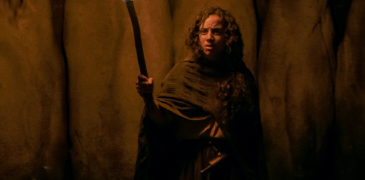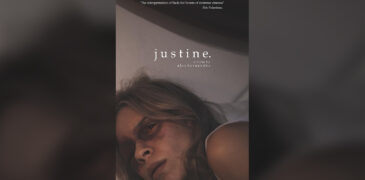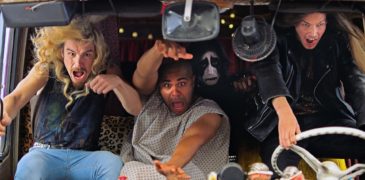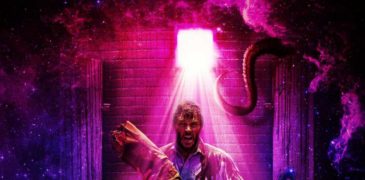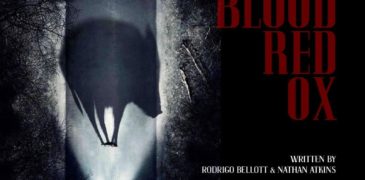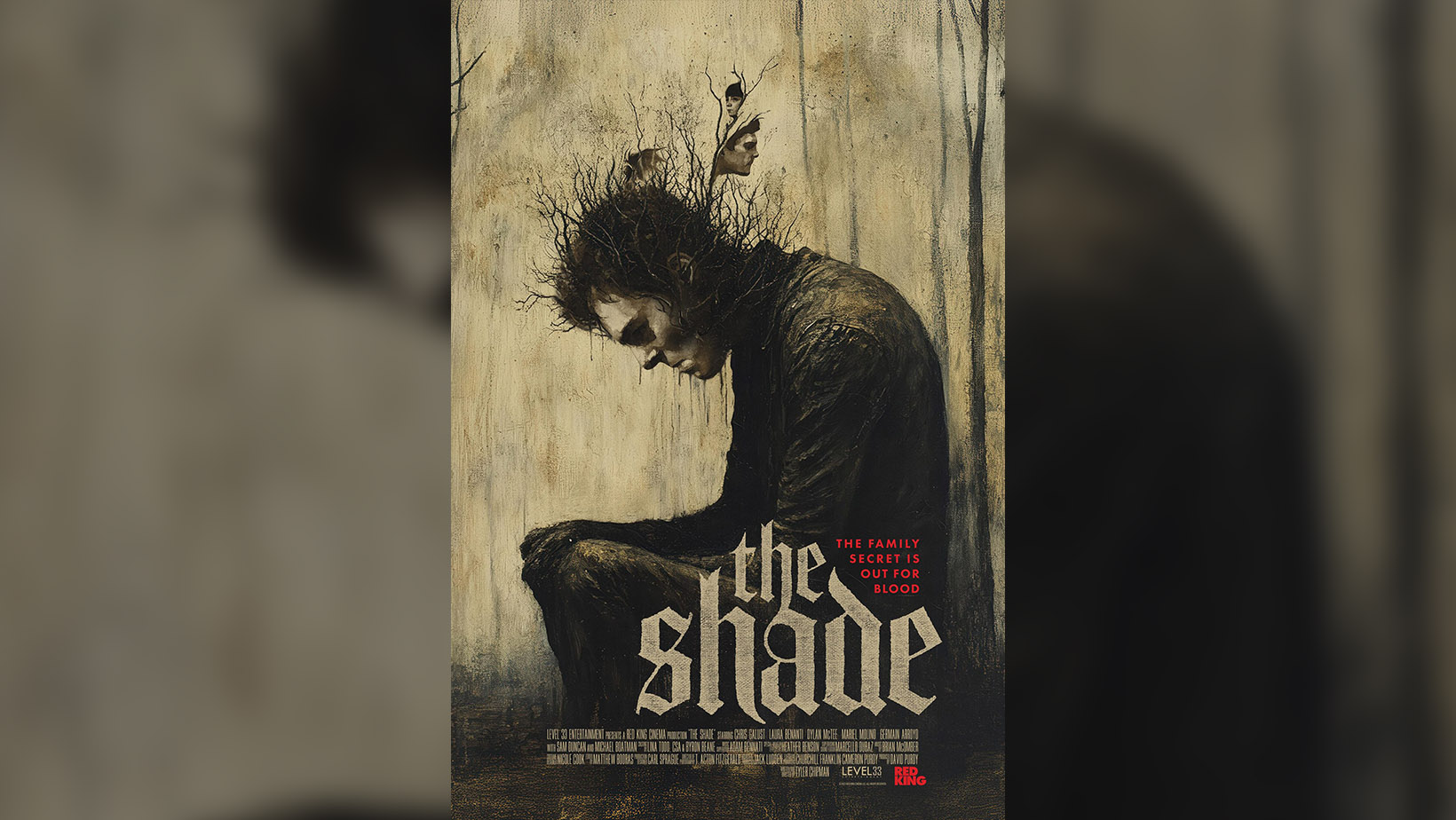
As a review journalist, I don’t usually use trigger warnings. However, due to the incredibly immersive nature of The Shade (2023), I feel it necessary to warn viewers who are sensitive to the subject of suicide. If you or anyone you know are experiencing a mental health crisis, please dial 988 in Canada, or refer to this comprehensive list to find the crisis line in your area.
The Shade follows Chris Galust in his Oscar-worthy performance as Ryan Beckman, a 20-year-old college student who is doing his best to be the man of the house while the family pulls themselves back together after his father’s suicide. He takes care of his younger brother James (Sam Duncan) while his mother (Laura Benanti) works, delivers pizzas part-time, and apprentices at a tattoo parlor where he hopes to earn his license as an artist. When his older brother Jason (Dylan McTee) suddenly returns home from college mid-semester, an old family secret slithers back to the surface. There’s something very wrong with Jason. While the viewer can see the family secret, personified by one of the best-designed hag creatures in recent years, it takes the entirety of the film to learn exactly what that secret is.
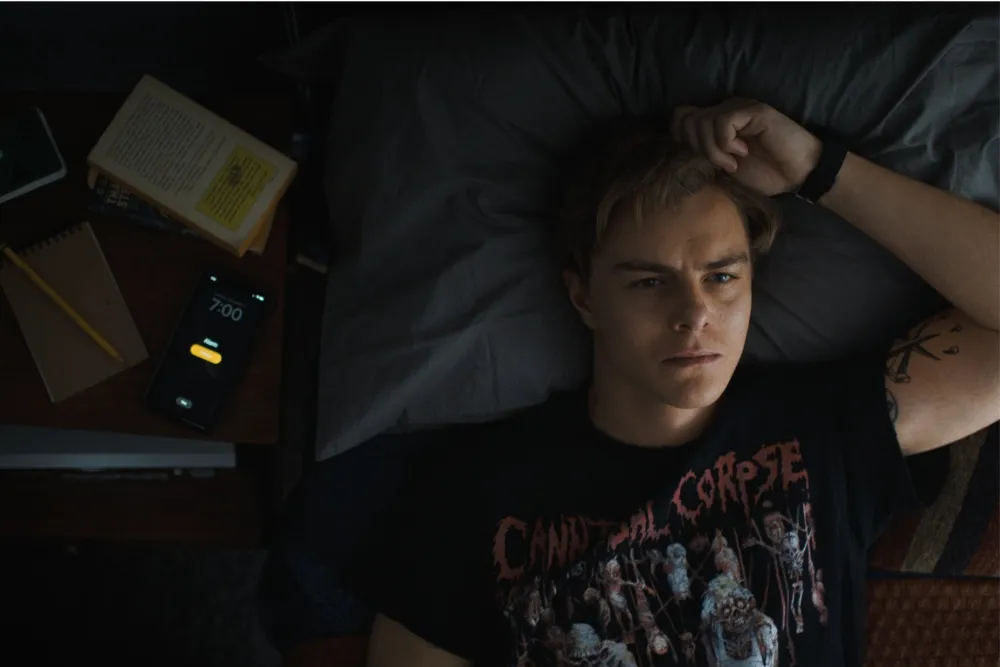
If this sounds confusing, it’s because it is. The Shade is carefully designed to keep the audience guessing right up to the final act, with devices that will divide viewers into love it and hate it camps. To those who have never experienced intense grief or mental illness, it may seem like a slow-paced trudge through a family drama with only a few “scares”. For the rest of us, though, this could very well be the number-one film of the year.
Writer/Director Tyler Chipman and co-writer David Purdy are an incredible creative match, telling their story of grief and anxiety through a cast of thoroughly relatable characters and a realistic dialogue that generates empathy in the viewer. The film is set in a small town with autumn leaves and old graves, average houses and older cars. Every character has a natural yet distinct personality, and they don’t feel like they are acting. We spend so much time with each of them that we feel like we know them, even smaller characters like Dan (Brendan Sexton III), the ornery pizza maker at Ryan’s place of employment. In scenes where more characters interact with one another, it truly feels like we’re watching someone’s home videos of real events. Not one moment of this film feels scripted, and that is part of its danger.
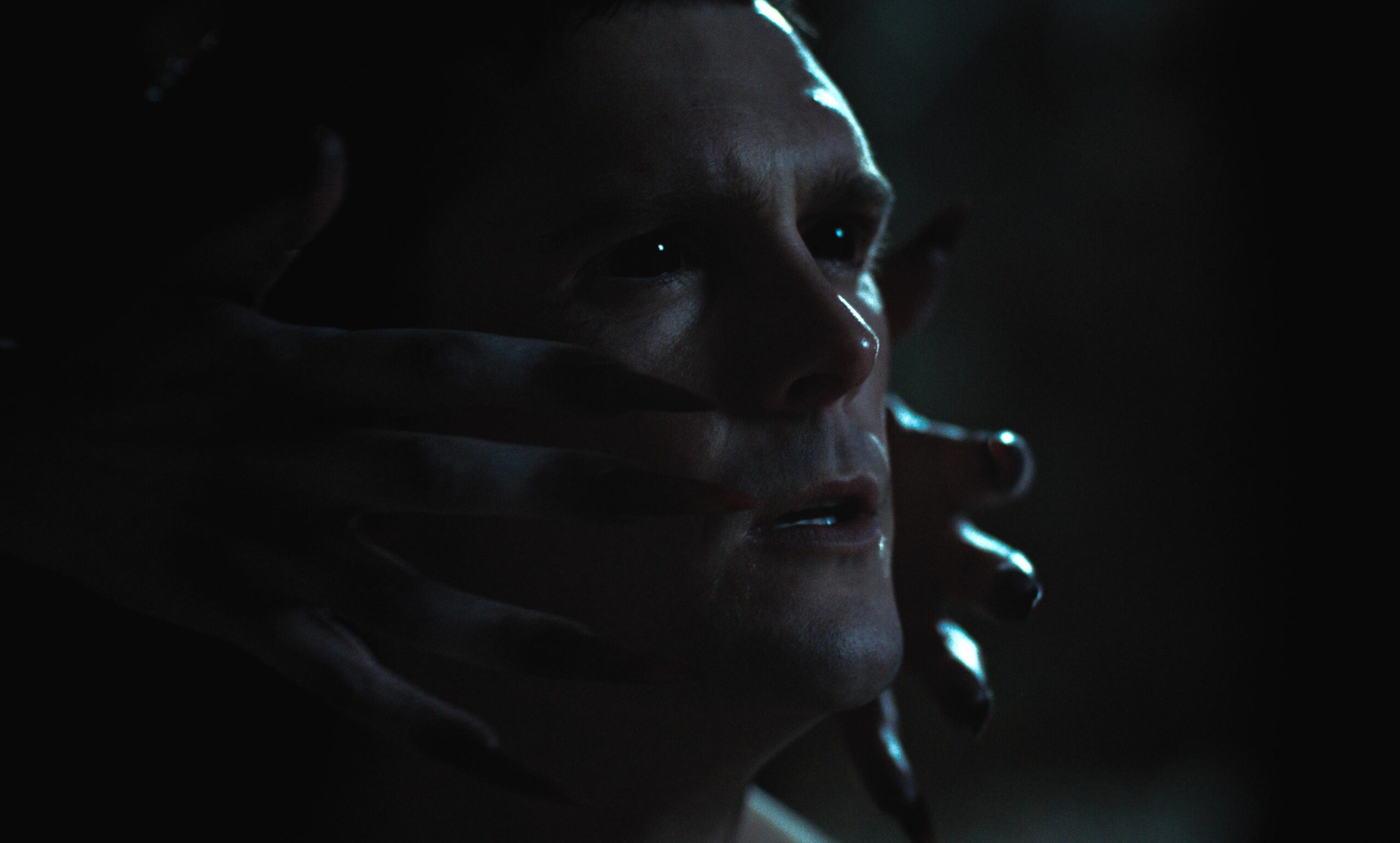
As viewers, we are used to watching a film from the outside, fully aware that we are in a theatre or on our own couch, watching an entertaining story. The Shade uses realistic people, dialogue, settings and character reactions to make us relax into its embrace, slowly building dread in the background until we, too, are clenching our jaws, waiting for the next appearance of the hag creature. We get lost in Ryan’s world, experiencing his frustration, fear and anxiety on a personal level. As a result, people who are sensitive to the subject matter may find themselves going down a very dark path mentally, themselves.
Chipman can not be faulted for this potential; it is a filmmaker’s goal to create a product that will have an impact on its audience. He should be applauded, rather, and celebrated for this absolutely beautiful film. Technically, The Shade is flawless, from the soundtrack to the editing. The choice to record Ryan at face level in profile during the character’s most vulnerable moments is one example of Chipman’s understanding of psychology and how to induce empathy. His world-building skills are phenomenal, with an opening scene that is downright shocking followed by a slow, thoughtful progression and expansion of our knowledge of the Beckman family and its tragedies. Visually, The Shade is filmed almost exclusively at night, when the human mind is more prone to anxiety and depression. Most scenes are dark, or wearing the grey shroud of late Autumn. It’s also worth mentioning that the practical design of the hag creature is wonderfully dreadful and sure to become a horror icon in the coming years.
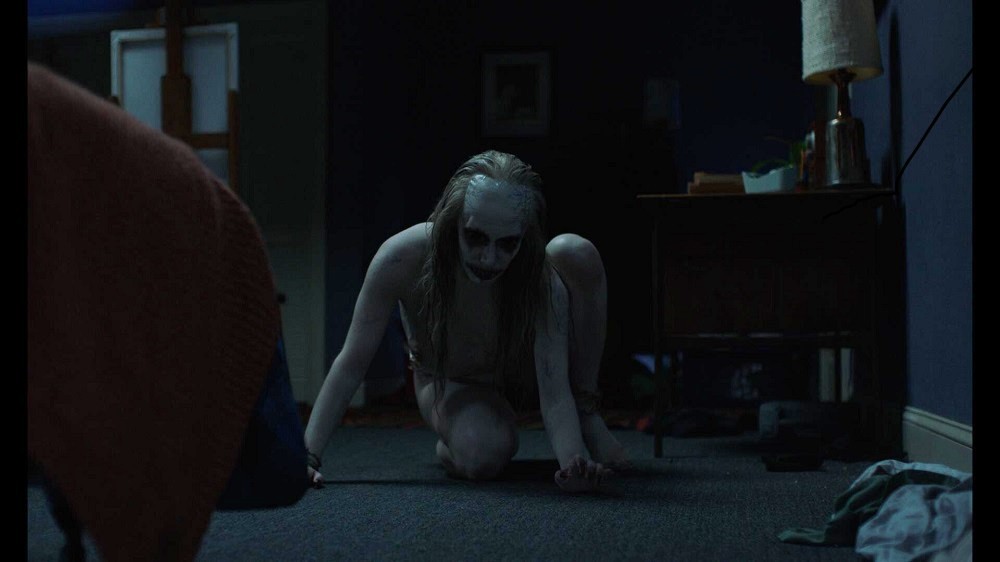
The dance between “is this all in his head” and “is the hag really there” continues right to the end of the film, where Chipman opted to leave us with a feeling of hope, rather than dragging us to Hell. The hag may be an allegory for grief, but what if she’s real? Maybe the family secret is inherited mental illness. Perhaps it’s that they’re cursed by this hag creature that drives them all mad in the end. That decision is left open for interpretation.
The Shade is an emotional journey through loss, terror, and feeling like you’re losing your mind. Please watch it if you feel safe to do so. Suicide may be the greatest horror anyone can experience, whether you’ve lost someone this way or survived it yourself. On a personal note, I’d like to thank the creators for telling this story, in this way. I feel seen.
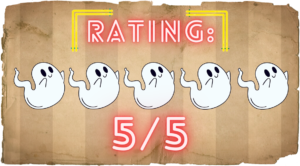
More Film Reviews
Fear Street Part Three: 1666 Film Review – Even the Strongest Curse Can be Broken
Film trilogies are a tricky business. With the exception of Lord of the Rings and Star Wars, most trilogies don’t set out planning to tell a singular story across three…
Justine (2022) Film Review – A Sympathetic Approach to Extreme Cinema
Sadomasochism (noun) : the derivation of sexual gratification from the infliction of physical pain or humiliation either on another person or on oneself. The term “sadism” has its origin in the…
Heavy Trip Film Review – Dark Comedy at its Best
If you’re a vegetarian and/or averse to the musical genre that is Post-Apocalyptic-Symphonic-Reindeer-Grinding-ScandoFinn-Metal then avert your eyes to the following review. 2018 Finnish shock-rock comedy Heavy Trip is just waiting to…
Lady Snowblood Review (1973) – The Finest Japanese Exploitation
Lady Snowblood is Toshiya Fujita’s 1973 Japanese exploitation flick that inspired the likes of Tarantino’s Kill Bill and countless other directors, featuring the beautiful Meiko Kaji, also famous as Lady…
Glorious (2022) Film Review – An Arterial Spray of Cosmic Horror
Fresh off its world premiere at Fantasia and coming exclusively to Shudder this week, director Rebekah McKendry’s new film Glorious is a mildly amusing slice of cosmic horror that does…
Blood-Red Ox (2021) Film Review – Bolivian & Queer, What’s Not To Like?
Blood-Red Ox (2021) is an ambitious attempt to capture the spirit of classic Italian horror cinema, and a bold step forward for the visibility of queer men in South American…

Kate’s love of all things dark began as a child and deepened when she realized what being an adult meant. She was born with a pencil in her hand and loves nothing more than writing horrific stories to tantalize her inner demons. Kate lives in Hamilton, Ontario Canada with her husband and her boys, stirring up trouble wherever she can.

